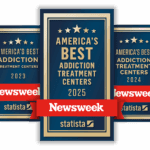Let’s imagine that you have had some minor surgery. Your doctor assures you that your recovery should be quick and total, but to help with the initial recovery pain, she has given you a prescription for tramadol.
You might be relieved—and not just for the pain management strategy. That feeling of relief might be tied to your knowledge of the ongoing opioid crisis in America—a crisis that has devastated so many lives. You may be aware that tramadol is not as powerful as some of the other opioids that are often in the headlines. That probably feels reassuring.
But it is important to keep in mind that tramadol is still an opioid—and that means you’re at risk for developing a substance use disorder centered on the drug. Let us give you the facts about tramadol and its potential misuse.
The Facts About Tramadol Temptations
Tramadol is, of course, a prescription medication. If you stick to the instructions on the label—and ask your doctor or pharmacist about anything you do not completely understand—you are likely going to be able to use the drug without issue. You will finish up your prescription, your pain will have lessened (or gone away entirely), and you can move on.
But it is surprisingly easy to stray from the label instructions—especially when the drug is making you feel good. Even when you have the best of intentions, there are still some traps you could fall into. Those traps include:
- Taking more of the drug at a time than has been prescribed under the theory that if some tramadol makes you feel pretty good, more tramadol will make you feel really good.
- Stockpiling the drug—by forging prescriptions, making appointments with multiple physicians, “borrowing” (or just stealing) it from other users, or finding an illegal source—under the theory that you are simply being proactive in your efforts to avoid pain now and in the future.
- Mixing the drug with alcohol or other drugs (whether legal or illegal) under the theory that you can find a combination that delivers even better sensations than those you experience when simply taking tramadol alone.
If you find yourself behaving in any of those ways, tramadol suddenly does not seem quite so tame.
The Facts About Signs and Symptoms
Tramadol misuse leads to a range of signs and symptoms that should alert you—and will probably alert others—that you have a problem. They may include:
- Changes in appetite
- Constipation
- Depression
- Dizziness
- Drowsiness
- Headaches
- Muscle aches
- Nausea and/or vomiting
- Pinprick pupils
- Reduced coordination
- Slurred speech
- Sweating with no apparent cause
In some extreme instances, the misuse of tramadol can lead to the depression of your central nervous system. When your brain activity is suddenly reduced by the drug, you could lose consciousness, fall into a coma, or even die. Seizures are another possible and serious side effect of tramadol misuse.
Finally, particularly if the drug is taken with antidepressants, tramadol abuse can spark serotonin syndrome, a condition characterized by an excess of serotonin in the brain. Serotonin syndrome can, like depression of the central nervous system, lead to death.
The Facts About Tramadol and Tapering
Given all of the above, you can see why a person who is misusing tramadol may be quite motivated to quit. But as a rule, quitting is not as simple as just deciding not to take the drug anymore. Here are some important facts about giving up the drug:
- It is not a good idea to go “cold turkey.” In the worst cases, doing so may lead to seizures.
- Even in seizure-free scenarios, the withdrawal symptoms you might experience can range from merely unpleasant to exceptionally alarming. Those symptoms may include:
- Irritability, a runny nose, a loss of appetite, and/or diarrhea
- Agitation, abdominal cramps, difficulty falling or staying asleep, and/or restless leg syndrome
- Panic attacks, paranoia, psychosis, delirium, hallucinations, and/or dangerous increases in your heart rate and/or your blood pressure.
- To avoid these problems related to withdrawal, tapering off of tramadol in a medically supervised setting is your best option.
- A residential treatment center—complete with a medically monitored detox program and a robust rehab program—may serve you well as you seek to put tramadol behind you.
We know a place worth considering.
The Facts About The Aviary Recovery Center
No matter whether you are struggling with tramadol or alcohol or any of the many drugs that can lead to a substance use disorder, The Aviary Recovery Center can help. We can provide medically supervised detoxification and a rehabilitation program personalized to meet your needs via individual and group therapy.
We are also ready and able to address any co-occurring mental health disorders—depression, anxiety, trauma-based disorders, and more—that may be associated with and contributing to your substance use disorder.
We know it can be hard to admit you are suffering from a substance use disorder. It can be hard to believe that anyone can help. It can be hard to believe that ongoing sobriety is within your reach.
But we know the facts: When you come to The Aviary Recovery Center, you can get help in a nonjudgmental environment. We have the expertise and compassion necessary to help you get sober. And we can provide the resources and support you need to stay sober.
One more fact: The time to get help for a substance use disorder is always right now.










